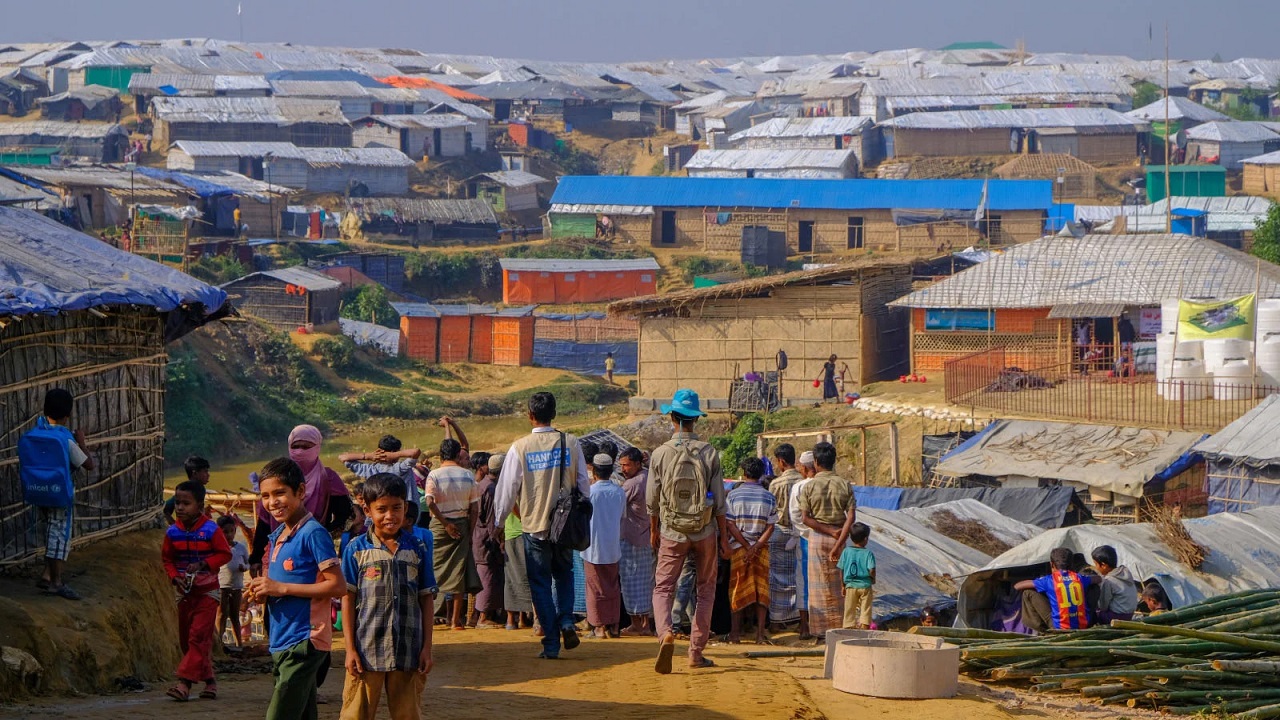Rohingya Refugee Crisis : Challenges of Refugee Management in South Asia
Context:
The Rohingya refugee crisis, one of the worst humanitarian crises of the 21st century, has seen over 700,000 Rohingyas flee Myanmar since 2017, primarily to Cox’s Bazar, Bangladesh—now the largest refugee camp in the world.
Recently, the abrupt reduction in funding by the United States Agency for International Development (USAID) has intensified the challenges faced by these refugees, worsening food insecurity, health services, and protection mechanisms.
Understanding this issue is essential from the perspective of international relations, human rights, and India’s neighbourhood policy, making it relevant for UPSC Mains GS Paper II and GS Paper III.
What is USAID?
The United States Agency for International Development (USAID) is the primary agency responsible for administering foreign aid and humanitarian assistance from the U.S. government.
-
Established: 1961 by President John F. Kennedy
-
Nature: Independent federal agency under U.S. State Department's guidance
-
Objective:
-
Promote global stability, democracy, and economic development
-
Support healthcare, education, and poverty reduction
-
-
Operational Method:
-
Funds distributed through NGOs, foreign governments, international organisations, and other U.S. agencies
-
-
Global Reach (FY 2023):
-
Operated in over 130 countries
-
-
Key Sectors:
-
Food security
-
Disaster relief
-
Healthcare
-
Gender equality
-
Environmental sustainability
-
USAID’s Role in India
USAID has played a crucial role in India’s development journey, especially in education and health:
-
Since 1951: U.S. began development aid under India Emergency Food Assistance Act (President Harry Truman)
-
Education Sector:
-
Helped establish:
-
8 agricultural universities
-
1st Indian Institute of Technology (IIT-Kharagpur)
-
14 Regional Engineering Colleges
-
-
-
Health Sector:
-
Supported national programs on:
-
Immunization
-
Family planning
-
Maternal and child health
-
HIV/AIDS, tuberculosis, and polio eradication
-
-
-
Recent Policy Shift:
-
Since 2004, India has rejected conditional foreign aid
-
Resulted in a gradual decline in foreign development assistance
-
Who are the Rohingya?
-
Ethnic Identity:
-
A Muslim minority group from Rakhine State, Myanmar
-
-
Citizenship Status:
-
Not recognized as citizens by the Myanmar government
-
Rendered stateless and vulnerable
-
-
2017 Crisis:
-
Military crackdown involving:
-
Mass killings
-
Sexual violence
-
Village destruction
-
-
Led to the exodus of over 700,000 Rohingyas into Bangladesh
-
-
Current Status:
-
Most settled in Cox’s Bazar (largest refugee camp globally)
-
UN termed it a “textbook case of ethnic cleansing”
-
Impact of USAID Funding Cut on Rohingya Refugees
The reduction in USAID support has deepened the humanitarian crisis in Cox’s Bazar:
1. Escalating Food Insecurity
-
World Food Programme (WFP) forced to reduce food rations:
-
From $12.50 to $8/month per refugee
-
A 36% decrease, pushing refugees toward starvation
-
2. Collapse of Healthcare Services
-
Closure of 5 hospitals
-
Breakdown of sanitation and hygiene infrastructure
3. Loss of Protection Services
-
Halted:
-
Gender-based violence programs
-
Psychosocial support
-
-
Increased vulnerability of women and children
4. Funding Gaps Despite Global Efforts
-
Other donor pledges (e.g., EU: €32.3 million) are insufficient to compensate for the funding void left by the USA
Measures to Address the Crisis
To prevent further deterioration and ensure sustainable support, the following steps can be considered:
A. Strengthen Multilateral Aid
-
Encourage more support to agencies like WFP, UNHCR, UNICEF
B. Utilize Global Financial Institutions
-
Tap emergency funds and soft loans from the World Bank and IMF
C. Diversify Donor Contributions
-
Engage emerging economies and regional powers in contributing aid
D. Mobilize Private Philanthropy
-
Encourage global corporate and individual donors to fund refugee assistance
E. Diplomatic Engagement
-
Use bilateral and multilateral diplomacy to urge the U.S. to resume or revise its aid policies
F. Advocate Long-Term Solutions
-
International pressure on Myanmar for:
-
Citizenship recognition
-
Safe repatriation of Rohingyas
-
G. Human Rights and Legal Action
-
Support efforts to investigate human rights violations
-
Ensure justice and reparations through international legal bodies
H. Invest in Livelihood and Rehabilitation
-
Focus on:
-
Vocational training
-
Mental health services
-
Educational opportunities
-
To reduce aid dependency and improve dignity of life
-


.jpg)
.png)
Comments (0)